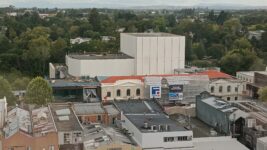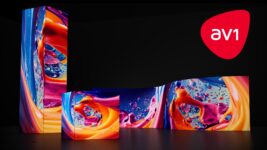News
29 Jun 2015
The Sound Of Light – JBL And Crown Amplify Vivid
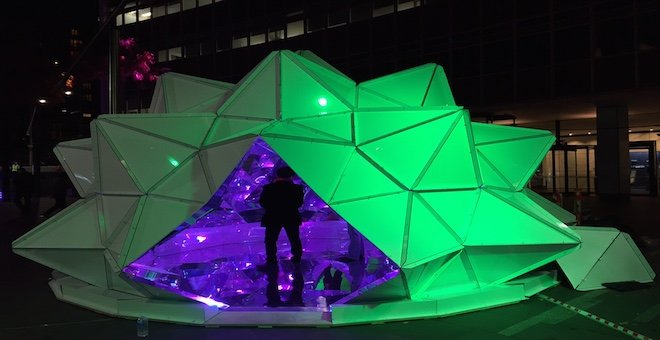
Subscribe to CX E-News
At Sydney’s Circular Quay, amidst the restaurants, ferries and tourists, a strange structure had been erected for the Vivid Festival, drawing hundreds to queue to get into it. In effect a giant walk-in kaleidoscope, ‘Light Origami’ is a collaborative installation from Japanese artists Masakazu Shirane and Saya Miyazaki, Kiwi Reuben Young, Australian composer Inge Liljestrom and the engineering team from consultancy firm Arup. It’s one of the highlights of Vivid, where the participant’s interaction with the piece makes the piece, the multifaceted mirrors of the kaleidoscope refracting and distorting the shapes, colours and movements of the audience as their perceptions of light and reality are altered.
Christopher Sims, Senior Consultant in the Acoustic and Theatre Consulting Practice at Arup, supported the creative team behind ‘Light Origami’ with a simple, effective and robust sound design that enhances the visual experience while working night in, night out, on automatic with no maintenance. But how does an electro-acoustician from a global engineering consultancy get involved with installation art in the first place?
“Arup have been involved since the first Vivid in 2009,” said Christopher. “It was initially championed within the organisation by a few individuals, and then supported by the firm as a whole. Vivid accords with Arup’s ethos of creativity, innovation, and shaping cities to be better places, so it’s an event we like to support. It’s effectively pro bono work, done by passionate individuals.”
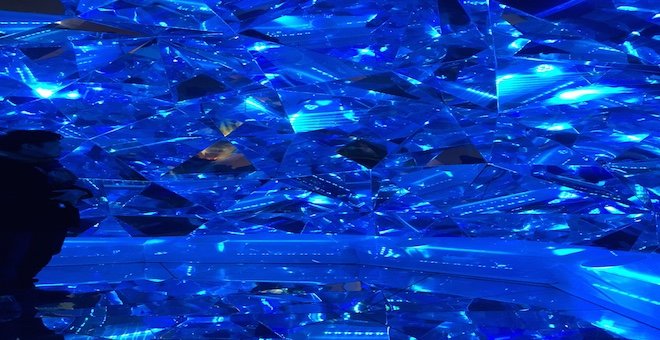
Composer Inge Liljestrom created a soundscape piece to accompany the work that is intended to surround the audience in the same way the shimmering, changing light of the kaleidoscope does. Christopher’s design challenge was to incorporate a sound system that was invisible, covered the whole structure and gave each audience member an aural experience analogous to the visual. Due to cabling and visual considerations, all normal mounting positions for speakers were ruled out. But Christopher came up with an innovative solution.
“We took eight JBL Control 16C/T ceiling speakers, which would normally be mounted in a ceiling and firing down,” explained Christopher. “We then built what we call a ‘shroud’ that runs around the perimeter of the structure along the ground, hiding the lighting and cabling. We then adapted the Control 16s standard mounting system, flipped them around and mounted them in the ‘shroud’ firing upward, bouncing their sound off the surfaces in the structure.”
The soundscape itself is only a stereo track, so Christopher had to devise a signal configuration that optimised the piece for the whole audience. “I decided to wire the speakers ‘left, right, left, right’ as you go around the structure,” he continued. “If you’re standing around the edge, you’ll get a local sense of stereo space. As you move into the middle, it’s more like a cocoon of sound. We’re not trying to maintain a stereo image within the space, because there’s no sense of left and right once you’re in there. It’s about creating a surrounding, enveloping experience.”
Running the speakers efficiently on 100v line, Christopher employed two channels of a Crown DCi 8|300N power amp, and used its built-in EQ processing to tune the space. It was all part of a design that had to be able to withstand long running times unsupervised, and being turned on and off abruptly. “The soundscape is played from an iPod mini with one track set to infinite repeat. The amplifier and lighting power source is on a digital timer that turns on at six PM and off at midnight. It’s a harsh environment with thousands of people around, so our approach is low-tech because we wanted robust solutions. My Arup colleague Tim Car and I have collaborated on Vivid projects before, and we’ve had the best success with the ones that are the most robust.”
Christopher sees Arup’s annual involvement in Vivid as a great way to foster creativity and innovation in cross-disciplinary teams. “It’s good to collaborate with the other disciplines in the organisation like structural and lighting,” he enthused. “It’s also good for us, as consultants and designers, to get our hands dirty. While we design audio and lighting systems, we’re not the ones who install them. With these art projects, we go down there and help build it. The structure for ‘Light Origami’ was manufactured in Wollongong and delivered to the site. Architectural students and volunteers helped us bolt it all together. Bumping in was a frenzy of limited time, electricians getting power from city poles, co-ordination, headaches and paperwork. When elements are delivered to sites, it’s never exactly how you expected it to be, so we were improvising, working together as a team to creatively solve problems. We’re really grateful for Jands acting as a sponsor for this project, as a lot of this is done purely for the love of it.”
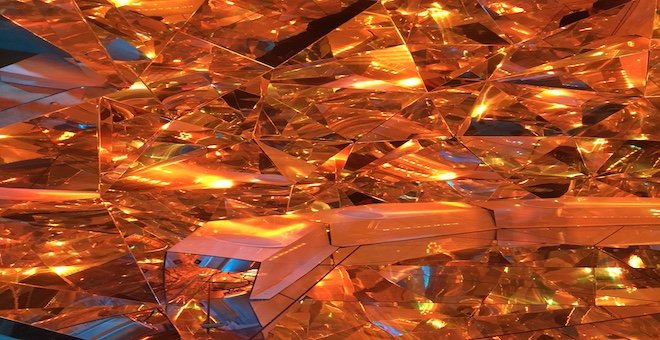
Subscribe
Published monthly since 1991, our famous AV industry magazine is free for download or pay for print. Subscribers also receive CX News, our free weekly email with the latest industry news and jobs.



